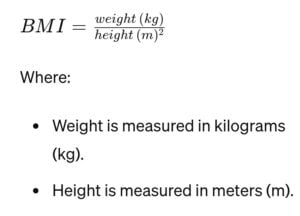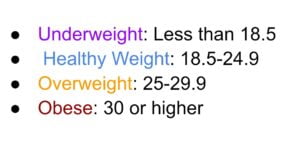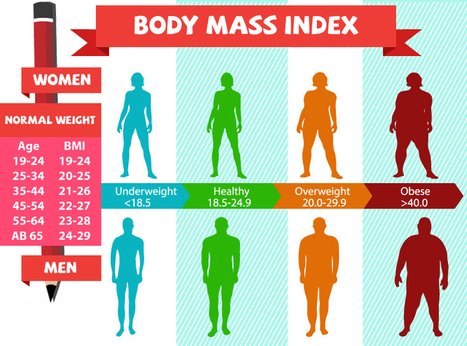Body Mass Index, or BMI, is a widely used tool by healthcare professionals that helps assess body fat based on height and weight measurements. But how is it calculated? What is Body Mass Index (BMI), and what are the different categories of BMI?
This article will teach us about BMI and its definition, formula, categories and BMI limitations. By the end of this article, you’ll clearly understand the Body Mass Index (BMI) and how it can be used to estimate body fat.
What is BMI?
BMI, or Body Mass Index, is a simple and commonly used measurement that estimates body fat based on height and weight. It’s a helpful tool for healthcare professionals to assess weight or health status and determine possible health risks related to excess body fat.
BMI Formula

The BMI formula is straightforward: it’s weight in kilograms (kg) divided by the square of height in meters (m2). The resulting value is then categorized into different weight ranges.
You can also use our BMI calculator tool to check your BMI : https://bmicalculator.help/bmi-calculator-for-adults/
BMI Categories
There are several BMI categories, each coincide to a specific weight range:

– Severe Thinness: BMI < 15
– Moderate Thinness: BMI = 16-17
– Mild Thinness: BMI = 17-18.5
– Normal: BMI = 18.5-25
– Overweight: BMI = 25-30
– Obese Class I: BMI = 30-35
– Obese Class II: BMI = 35-40
– Obese Class III: BMI > 40
Limitations of BMI:
Sin BMI is a useful tool, it’s also important to know about its limitations:
Body Composition Ignored:
BMI doesn’t distinguish between muscle and fat. Muscular individuals may have a higher BMI despite being healthy.
Fat Distribution Overlooked:
BMI doesn’t account for where fat is located in the body. Central fat accumulation poses higher health risks.
Not Universally Applicable:
BMI may not be accurate for athletes, the elderly, or individuals with specific medical conditions.
Limited Health Assessment: BMI alone doesn’t provide a complete health picture. Other factors like diet, exercise, genetics, and medical history are equally important.
Conclusion
While BMI provides an easy estimate of body fat, it’s essential to recognize its limitations. By knowing your BMI category, you can take positive steps to maintain a healthy weight and reduce potential health risks. Remember, BMI is just one part of your overall health. Hence, it’s essential to consider other factors such as diet, exercise, and general well-being and take help from healthcare professionals.
